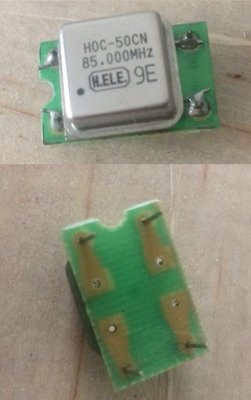Good to here you have the 256kb of cache working!
What are your cache settings? How many bits are your tag ram?
Yeh don't know what is going on with those crystals, they do get hot. Way hot, hotter than they should even if they are 3.3v ones. I might cut one open and see what is inside. Maybe they need some current limiting resistor or something weird.
My small can to big can adapter is just a dip and solder squished in to bridge it.
50Mhz is totally fine, 62.5 Mhz (125mhz crystal) seems fine for the board, but it is too fast for the L1 cache on chip, as soon as its enabled it crashes. I also needed 12ns tag cache ships to boot at 62.5. Also 60ns memory is a must, I couldn't get anything to work with 70ns. If I could get a ~55mhz crystal working I think that would be ok. The 125mhz crystals are cheap, so if you are having good luck at 50mhz and have some 12ns cache and 60ns memory, try the 62.5. Certainly I don't think the chipset is a huge issue at that speed. ISA bus and cpu are likely to be issues.
I will just keep my eyes open for more 110-115mhz crystals.
I will continue working on my Chips and Technology motherboard software so I can easily adjust all the options, even the undocumented ones.
I don't think I will match the doom record you have, but it will probably get quite close. Still a good combo, 50mhz, 128kb cache and 50mhz with a 486sxl. With SD storage and the accelerated windows video, it is quite a usable setup.
AMD and Cyrix could have probably released a 50mhz and even possibly a 60mhz 386 or 486 (91/92/93). But at that point the pga132 socket was dying, the 486 socket makes more sense with its cache control, made more sense. Even at 50 or 60mhz at pga132 is still not as fast as a proper 486, and its FPU is always going to be behind.
Then the early 486 platform gave way to 32bit buses 486, which then gave way to PCI and Pentium. But 386 did find significant install bases in things like laptops, military applications, networking appliances etc. I am quite suprised that they didn't release a faster 386. A 50Mhz bus would have been pretty easy and many types of board would be abe to accommodate that speed. I guess the obvious answer was if you need something faster go 486, which also came in several embedded formats.
